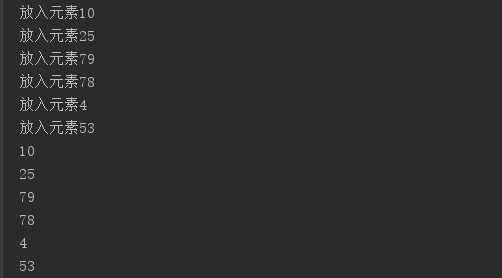标签:list() alt new system out tar 一个 exti code
BlockingQueue 是一个生产者消费者队列,可以很好的实现资源的有序存取,主要有LinkedBlockingQueue和ArrayBlockingQueue两个实现
主要的方法:
(一)放入数据
(1)offer(anObject): 将anObject加到BlockingQueue里,成功返回true,否则返回false.(本方法不阻塞当前执行方法的线程);
(2)offer(E o, long timeout, TimeUnit unit):可以设定等待的时间,如果在指定的时间内,还不能往队列中加入BlockingQueue,则返回false。
(二)获取数据
(1)poll(time):取走BlockingQueue里排在首位的对象,若不能立即取出,则可以等time参数规定的时间,取不到时返回null;
(2)poll(long timeout, TimeUnit unit):从BlockingQueue取出一个队首的对象,如果在指定时间内,队列一旦有数据可取,则立即返回队列中的数据。否则知道时间
超时还没有数据可取,返回失败。
(3)take():取走BlockingQueue里排在首位的对象,若BlockingQueue为空,阻断进入等待状态直到BlockingQueue有新的数据被加入;
(4)drainTo():一次性从BlockingQueue获取所有可用的数据对象(还可以指定获取数据的个数),通过该方法,可以提升获取数据效率;不需要多次分批加锁或释放锁,返回list。
例如:有两个线程,一个线程每2秒放入一个100以内的整数,另一个线程每10秒按放入的顺序拿出这些整数。
BlockingQueue<Integer> blockingQueue = new LinkedBlockingQueue<>(10);
ScheduledExecutorService executorService = Executors.newScheduledThreadPool(1);
executorService.scheduleAtFixedRate(new Runnable() {
@Override
public void run() {
Random r =new Random();
int value = r.nextInt(101);
System.out.println("放入元素"+value);
blockingQueue.offer(value);
}
},0,2,TimeUnit.SECONDS);
new Thread(new Runnable() {
@Override
public void run() {
while (true){
try {
Thread.sleep(10000);
} catch (InterruptedException e) {
e.printStackTrace();
}
List<Integer> integerList = Lists.newArrayList();
blockingQueue.drainTo(integerList);
integerList.forEach(System.out::println);
}
}
}).start();
标签:list() alt new system out tar 一个 exti code
原文地址:https://www.cnblogs.com/hts-technology/p/9300427.html